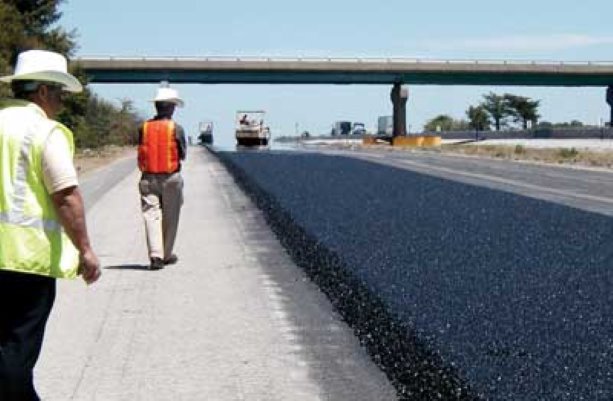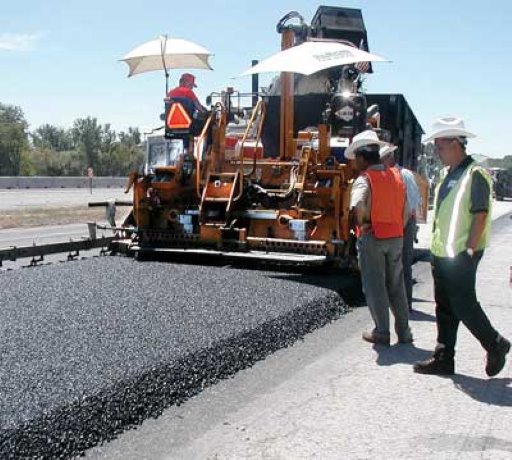Used in several American states during the past few years, perpetual pavement highway construction is coming to Ontario on an experimental basis.
Innovation
Process prevents fatigue cracking
Used in several American states during the past few years, perpetual pavement highway construction is coming to Ontario on an experimental basis.
Preliminary work for twinning a 6.6-kilometre stretch of Highway 406 using perpetual pavement got underway in November by Hard Rock Paving.
The stretch of road runs just north of Beaver Dams Road to south of Port Robinson Road in the Thorold area.
Construction will proceed in the spring as one of three trial perpetual pavement projects the Ministry of Transportation will conduct on provincial highways, says senior pavement design engineer Becca Lane.
Also scheduled for this spring, a second project is reconstruction of a 11.3-kilometre section of Highway 402 near Sarnia.
The third perpetual pavement project will be the twinning of 8.1-kilometre portion of Highway 7 east of Carleton Place from just west of Ashton Road to west of Jinkinson Road. It’s scheduled to get underway in 2007.
The three demonstration sections will be monitored and tested on both a short- and long-term basis to determine if the structural performance achieved is worth the extra cost that a standard asphalt design would entail, says Lane. “We will be using more asphalt, so the cost will be greater.”
The projects are the culmination of several years of lobbying efforts by the Ontario Hot Mix Producers’ Association (OHMPA) to promote this road construction technique.
Perpetual pavement is pavement design to have 50 or more years of life with only resurfacing carried out to renew the wearing course.
“A perpetual pavement is a flexible pavement designed from the bottom up to resist structural failure, minimize cracking and rutting, and last for 50 or more years with only periodic renewal,” says Lane.
It’s a multi-layer design consisting of a renewable thick surface layer, a strong rut-resistant 100 to 175-mm thick strong and rut resistant intermediate layer, and a flexible, fatigue-resistant “rich bottom layer” that’s richer in asphalt cement, says Lane.
In traditionally-designed pavement, there will be rehabilitation in 15 to 18 years and again at 25 years after which it is reconstructed. The usual problem is fatigue cracking, says OHMPA technical director Sandy Brown.
“Pavements fail in this mode as the pavement repeatedly flexes under traffic loading until it cracks from the bottom up.”
In order to prevent this fatigue cracking, perpetual pavement is designed with the slightly thicker granular and asphalt layers. Resurfacing of the top layers only is conducted approximately every 20 years.
But the perpetual pavement method has not been extensively validated in the field and so test sections are being constructed in Canada and the United States, says Brown, who was a member of Asphalt Institute tour to China in January to see a perpetual pavement project there.
As part of the three Ontario projects, OHMPA is a partner with the University of Waterloo’s Centre for Pavement and Technology in a long-term study that will evaluate the strain on Highway 402 perpetual pavement section. It will involve the uses of gauges, moisture probes and data loggers, says Brown.

Ontario officials are keeping a close eye on perpetual paving projects, like the one completed recently in Illinois. By studying sites in the U.S., roads officials here have decided to proceed with testing the concept on a stretch of Highway 406 in the Niagara Region. Preliminary work began in November and construction will proceed this spring.











Recent Comments
comments for this post are closed